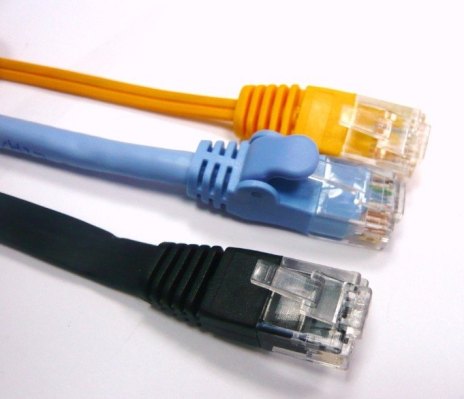Almost everyone is familiar with network cables specially someone working in Technical or IT departments. Network cables all look the same but what some people do not know that there is quite a significant difference in those cables. Let’s see what are different network cables are.
Cat5: A Little Older, A Little Slower
Category 5 cabling, also known as Cat5, is an older type of network cabling. Cat5 cables were made to support theoretical speeds of 10Mbps and 100Mbps. You may be able to get gigabit speeds on a Cat5 cable, particularly if the cable is shorter, but it isn’t always guaranteed.
Since Cat5 is an older type of cabling, you probably won’t see them very much in the store, but you may have gotten some with an older router, switch, or other networking device.
Cat5e: Faster with Less Interference
Category 5 enhanced cabling, also known as Cat5e, is an improvement on Cat5 cabling. It was made to support 1000 Mbps “gigabit” speeds, so in theory, it’s faster than Cat5. It it also cuts down on crosstalk, the interference you can sometimes get between wires inside the cable. Both of these improvements mean you’re more likely to get fast, reliable speed out of Cat5e cabling compared to Cat5.
Cat6: Even Faster, But Not Super Necessary
Category 6 cabling is the next step up from Cat5e, and includes a few more improvements. It has even stricter specifications when it comes to interference, and in some cases is capable of 10-Gigabit speeds. You probably won’t use these speeds in your home, and the extra interference improvements won’t make a huge difference in regular usage, so you don’t exactly need to rush out and upgrade to Cat6. But, if you’re buying a new cable, you might as well, since it is an improvement over its predecessor.
So, which cable you should use ?
OK, so you now know difference in those cables that surrounds your life 🙂 Question is which cable you should use.
Before answering that question, It’s important to note that your network speed is different than your internet speed. Your Internet speed mainly depends on your Internet Service Provider so upgrading your cables hoping that it will increase your internet speed isn’t going to make a difference.
However if you are transferring files between computers (for example backing up your data to an external network drive or NAS, using gigabit-compatible hardware can make things move along faster. Remember, though, you’ll need more than just cables—to get gigabit speeds, you’ll also need a gigabit-compatible router and gigabit-capable network cards in your computers. Most modern routers and cards are already capable of these fast speeds, but if you have any older PCs or routers, they might not be. Google your hardware’s model number to find out.
In an office environment where you access your servers, access other equipment, have an Exchange server for emails etc, it is always important to have cables that can improve your enterprise IT infrastructure.
Specially for Service Providers, they MUST use Cat6 cables with all gigabit or even higher bit routers/switches.

Not a bad article. thanks mate